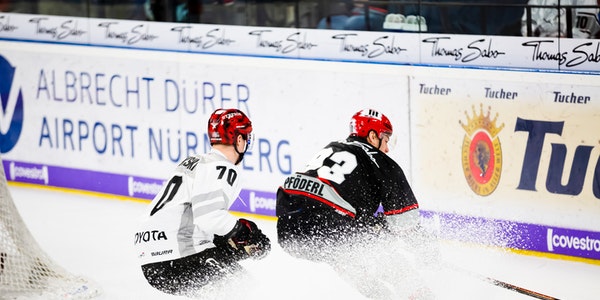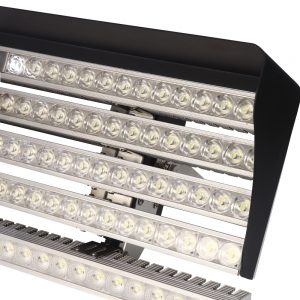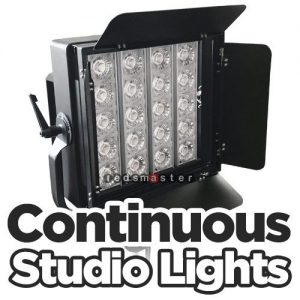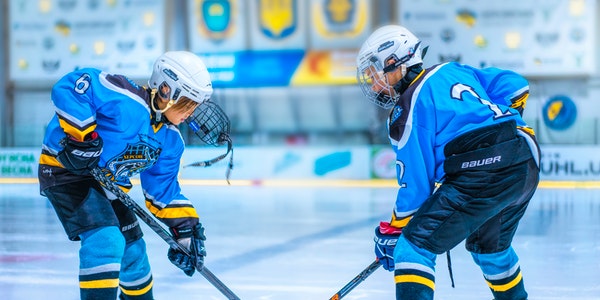What is Ice Hockey
Ice Hockey is a collective competitive sport in which ice skates and hockey sticks are used as tools to play against each other on ice. It is composed of men’s and women’s events. It is an independent winter sports event in the international sports taxonomy.
Ice hockey stadium lighting design—the stadium lighting design relies on the overall arrangement of light to comfortably serve the different perspectives of athletes, referees and spectators. Enables athletes to concentrate on giving full play to their competitive level and create good results; enable referees to quickly make accurate and unmistakable judgments; allow spectators present to easily appreciate the technical play of sports and feel the intense and lively performance on the court At the same time, the color TV broadcast picture is clear and lifelike.
The lighting design of the ice hockey stadium lighting design is based on the function of light, which acts on the vision of athletes, referees and spectators reasonably. Allows athletes to concentrate on giving full play to their competitive level and create good results; enables referees to quickly make accurate and unmistakable judgments; allows audiences to easily appreciate the technical play of sports and feel the intense and lively on the field The competitive atmosphere makes the picture of color TV broadcast clear and vivid.
The standard ice hockey rink has a length of 60 meters, a width of 30 meters, and a corner arc radius of 8.5 meters. The ice rink is surrounded by a solid boundary wall made of wood or plastic materials of 1.15 to 1.12 meters. Except for the official site markings, all ice surfaces and inner walls of boundary walls shall be white. The hockey goal is 1.83 meters wide and 1.22 meters high, and the deepest part of the goal is no more than 1 meter or less than 60 meters.
Ice hockey is a combination of changeable skating skills and agile and skilled hockey skills, one of the more antagonistic collective ice sports, and it is also an official event of the Winter Olympics. Athletes are wearing skates and skating with ice sticks in hand to hit the ball. The ball is generally made of hard rubber, with a thickness of 2,54 cm and a diameter of 7.62 cm. The ball weighs 156-170 grams. During the game, each team has six players, three forwards, two defenders and one goalkeeper. The athlete hits the ball into the opponent’s goal with an ice stick, and the winner is the more.
Lighting standards
Sports: (curling), ice hockey lighting standards
| Class | Sports classification | Illuminance Lx | Illumination uniformity | light source | Glare level | ||||||
| Eh | Evmai | Evsec | Horizontal | Vertical | CRI (Ra) | CCT (K) | GR | ||||
| U1 | U2 | U1 | U2 | ||||||||
| I | Amateur training | 150 | / | / | 0.4 | 0.6 | / | / | 65 | 4000 | <40 |
| II | Non-competition, entertainment | 300 | / | / | 0.4 | 0.6 | / | / | 65 | 4000 | <40 |
| III | Domestic amateur competition | 600 | / | / | 0.5 | 0.7 | / | / | 65 | 4000 | <40 |
| IV | Domestic professional competition | 1000 | / | / | 0.5 | 0.7 | / | / | 65 | 4000 | <40 |
| V | TV broadcast domestic games | / | 1000 | 750 | 0.5 | 0.7 | 0.4 | 0.6 | 65 | 4000 | <40 |
| VI | TV broadcast international competitions | / | 1500 | 1000 | 0.6 | 0.7 | 0.4 | 0.6 | 80 | 4000 | <40 |
| VII | High-definition HDTV broadcast competition | / | 2000 | 2000 | 0.7 | 0.8 | 0.6 | 0.7 | 80 | 4000 | <40 |
| VIII | Emergency TV | / | 1000 | / | 0.5 | 0.7 | 0.4 | 0.6 | 80 | 4000 | <40 |
| Note: 1. The competition field should have a very good uniformity and a high level of illumination to prevent glare from the competition field. 2. Since many actions of the athletes take place near the hoarding, the shadow formed by the hoarding should be excluded, and the vertical illumination near the hoarding should be ensured for the camera. |
|||||||||||
In order to ensure that ice athletes and spectators can track fast-moving athletes and clearly see the detailed movements of athletes, ice sports competitions must have a higher level of lighting, especially in large stadiums, because spectators are far away from the sports field. To be able to see the game clearly, especially to see the tiny details of movements, ice sports require a high level of lighting. The visibility of a moving object depends on the size, speed and brightness contrast of the object and its background brightness and ambient brightness.
Lighting Design
- Gymnasium sports classification The sports carried out in indoor gymnasiums are generally divided into two categories. One is the movement that mainly uses space, and the other is the movement that uses the low position. Therefore, when designing lighting, attention should be paid to the characteristics of different sports and treated separately.
Usually gymnasiums are mostly for comprehensive purposes, and are divided into small and medium gymnasiums, large gymnasiums and color TV broadcast gymnasiums according to their scale.
| classification | Sports |
| Sports that mainly use space | Badminton, basketball, tennis, handball, volleyball, table tennis |
| Mainly use low position exercise | Gymnastics, hockey, ice sports, swimming, judo, wrestling, martial arts, boxing, weightlifting, fencing, shooting |
- Lighting standards
The basic principles of stadium lighting design: for stadium lighting design, the designer must first understand and master the requirements of the ice hockey stadium lighting: the illumination standard and the lighting quality. Then the lighting plan should be determined according to the height and location of the possible installation of lamps in the ice hockey hall building structure. Due to the limitation of the height of the ice hockey hall, it is necessary to meet the illuminance standard and the lighting quality requirements. Therefore, lamps with reasonable light distribution, suitable pitch-to-height ratio and stricter brightness restrictions should be selected.
 When the installation height of lamps is less than 6 meters, fluorescent lamps should be used; when the installation height of lamps is 6-12 meters, metal halide lamps with a power of no more than 250W should be used; when the installation height of lamps is 12-18 meters At the time, metal halide lamps with a power of no more than 400W should be used; when the installation height of the lamps is above 18 meters, metal halide lamps with a power of no more than 1000W should be used; Floodlight with wide beam.
When the installation height of lamps is less than 6 meters, fluorescent lamps should be used; when the installation height of lamps is 6-12 meters, metal halide lamps with a power of no more than 250W should be used; when the installation height of lamps is 12-18 meters At the time, metal halide lamps with a power of no more than 400W should be used; when the installation height of the lamps is above 18 meters, metal halide lamps with a power of no more than 1000W should be used; Floodlight with wide beam.
Ice hockey lighting design
- The lighting method of the ice hockey arena. The lighting of the ice sports arena has special characteristics. The layout of the lighting and the light projection direction have a decisive influence on the lighting quality. The lighting of the stadium and sports venue should adopt the following lighting Ways:
1) Single uniform lighting method Single uniform lighting method means that a single lamp is evenly arranged above the ice hockey arena, generally used for basketball, handball, table tennis, gymnastics, hockey, ice sports, judo, wrestling, martial arts, etc. Small and medium-sized stadiums. This kind of lighting method is more economical, but the three-dimensional effect of lighting is poor. 2) Group uniform lighting method Group uniform lighting method means that several single lamps form a group and are evenly arranged over the ice hockey rink. They are generally used for basketball, handball, table tennis, gymnastics, hockey, ice sports, Small and medium-sized gymnasiums such as judo, wrestling, and martial arts, and large gymnasiums with relatively high height. This kind of lighting method is more economical.
3) The side lighting method of the horse road is to install the lamps on the horse road on the side of the ice hockey stadium, and adjust the projection angle of the lamps to realize the lighting of the field. Generally used in badminton , Tennis, swimming and other indoor events, as well as venues that require high vertical illumination, such as color TV broadcast stadiums. The lighting effect of this lighting method is good.
Lamps horse lanes are usually set on both sides of the sports field, and two or four horse lanes can be set up according to the size of the field. The position of the horse track should be set in a range where the elevation angle θ from the sideline of the venue to the opposite sideline is greater than 40 degrees (when there are audience seats on both sides of the venue) or greater than 30 degrees (when there are no audience seats on both sides of the venue). Within this range, the smaller the elevation angle θ, the more beneficial it is to increase the vertical illuminance.
However, when selecting the elevation angle θ, the proportional relationship between “vertical illuminance and horizontal illuminance” and the glare control problem should also be considered. - Combination lighting method (single lamp uniform lighting + side lighting lighting) method Combination lighting method is a lighting method that combines the two lighting methods of single lighting uniform lighting and side lighting lighting, applicable to all For indoor projects, through different combinations of light-on control modes, it can meet the requirements of large stadiums and color TV broadcast stadiums with higher vertical illumination requirements, and have a better lighting three-dimensional sense.
Lamps should be selected according to the above-mentioned principles of “single lamp uniform lighting” and “side lighting” when combining lighting methods. Indirect lighting method Indirect lighting is a more comfortable lighting method. The lamps do not directly illuminate the sports field, but realize the field lighting through reflected light. This kind of lighting method requires the top of the gymnasium to be made of high reflectivity material, and the height of the top should not be less than 10 meters. The installation height of the lamps should be higher than the normal line of sight of athletes and spectators to control the direct glare of the lamps. Generally used for badminton, swimming, etc., not suitable for venues that require color TV broadcasting.
Commonly used lamps
The light source of the ice hockey arena lighting should be professional stadium floodlights or high-efficiency floodlight stadium LED lamps.
The performance characteristics of Tachyon stadium professional floodlights: light, with easy-to-carry handles, and 360-adjustable mounting brackets. At the same time, it is equipped with precise sight accessories, installed on the top or low end of the lamp body. Ambient temperature: it can be used in regular weather indoor and outdoor Through gradual improvement, the luminous efficiency of lamps and the effective utilization of light are greatly improved. The unique circular optical system cooperates with the new light source to ensure the overall efficiency with high reliability, low glare and the best lighting level. The appearance is compact and beautiful, the drag coefficient is small, and the weight is light. The lamp has a uniquely designed light distribution curve. Accurate beam, multiple light distribution, instant start and other features.
Tachyon high-efficiency floodlight performance characteristics: patented heat dissipation structure design, LED heat dissipation area is larger, better thermal conductivity, not only effectively reduces the heating of the LED node, but also has lower light decay and longer life, while the product is lighter and safer With extremely high performance, it is a high-tech LED lamp suitable for sports lighting on the market.


